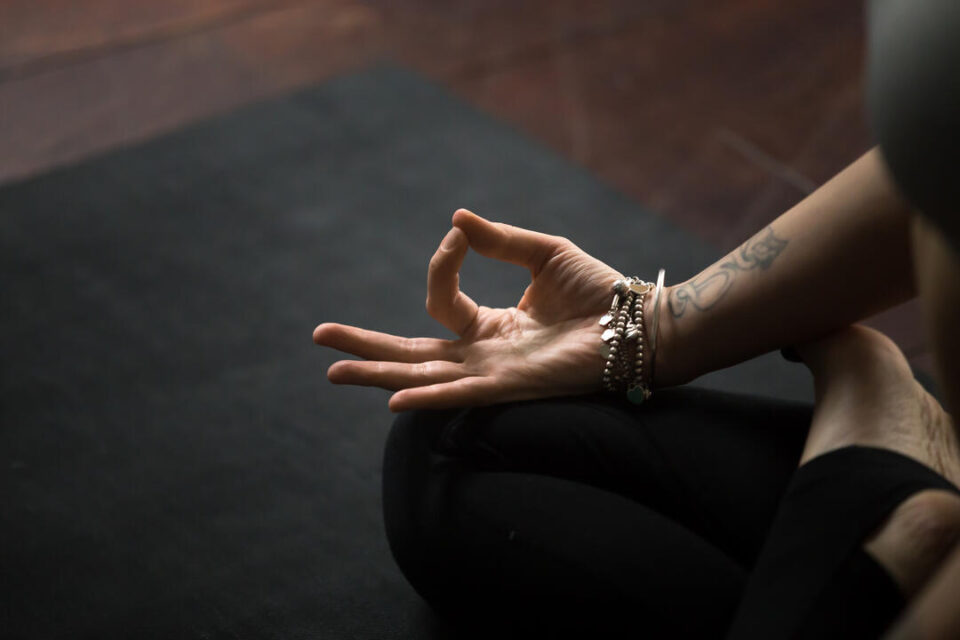Nilesh, a 32-year-old software engineer, walked into my clinic burdened by the weight of anxiety and depression. The pressures of his demanding job, coupled with personal challenges, had woven a tight web around his mental well-being. Traditional treatments were proving insufficient, leading me to explore alternative methods. With a heart full of hope, I introduced Nilesh to the centuries-old yogic technique of Kapalabhati. What followed was an astonishing journey of self-discovery and healing that inspired me to delve deeper into the potential of this practice.
Kapalabhati: Unraveling the Essence
Kapalabhati: A Sanskrit term translating to “skull-shining breath,” this pranayama technique has its roots in the ancient science of yoga. It involves forceful exhalations followed by passive inhalations, creating a rhythmic pattern that stimulates the abdominal muscles and clears the respiratory passages. The benefits extend far beyond the physical, offering a profound impact on mental health.
How Kapalabhati Alleviated Nilesh’s Struggles
Nilesh’s case exemplifies Kapalabhati’s potential. His initial skepticism gave way to curiosity, and as he embraced the practice, a gradual transformation unfolded. Here’s how Kapalabhati became his beacon of light.
1. Mental Clarity and Focus
The daily practice of Kapalabhati, even for a few minutes, brought Nilesh a newfound mental clarity. The technique’s emphasis on controlled breathing elevated his focus, enabling him to navigate challenges at work with a calm mind.
2. Stress Reduction
The rhythmic nature of Kapalabhati triggered the relaxation response in Nilesh’s body. Cortisol levels, the notorious stress hormone, witnessed a decline, leading to reduced overall stress levels.
3. Emotional Equanimity
Kapalabhati acted as an emotional anchor for Nilesh. Gradually, he found himself better equipped to manage emotional upheavals, responding to situations rather than reacting impulsively.
4. Enhanced Mood
Research indicates that Kapalabhati stimulates the release of endorphins, the body’s natural mood enhancers. Nilesh’s journey echoed this as he reported a gradual lifting of the emotional fog that had clouded his days.
The Science Behind Kapalabhati’s Impact
Kapalabhati’s influence on mental health isn’t confined to anecdotal evidence. Emerging studies have illuminated the biological mechanisms that underlie its therapeutic effects.
Neurotransmitter Regulation: Kapalabhati is associated with increased production of gamma-aminobutyric acid (GABA), a neurotransmitter that soothes the nervous system, reducing anxiety and depression symptoms.
Autonomic Nervous System Balance: Regular practice of this pranayama is linked to a harmonious balance between the sympathetic and parasympathetic nervous systems, fostering a state of relaxation and emotional stability.
Cognitive Enhancement: The enhanced oxygenation resulting from Kapalabhati improves cognitive function, contributing to sharper focus, enhanced problem-solving skills, and improved mood regulation.
All about Kapalabhati for Anxiety and Depression
1. Is Kapalabhati suitable for everyone?
Absolutely! However, pregnant women, individuals with respiratory disorders, or those with recent abdominal surgeries should consult a healthcare professional before starting the practice.
2. How long should I practice Kapalabhati?
Begin with 2-3 minutes and gradually increase the duration as your comfort level improves. Consistency matters more than duration.
3. Can Kapalabhati replace the medication for anxiety and depression?
Kapalabhati can complement conventional treatments but should not be considered a sole substitute. Consultation with a doctor is essential.
4. Can children benefit from Kapalabhati?
Yes, but under proper guidance. Children can experience improved focus and reduced anxiety through modified, age-appropriate practices.
5. Can Kapalabhati be practiced during an anxiety attack?
During an acute anxiety episode, opt for calming techniques like deep, slow breathing. Kapalabhati might be more suitable for managing overall anxiety rather than during an attack.
6. How quickly can I expect results?
Results vary, but many practitioners report a noticeable shift in mood and mental state within a few weeks of consistent practice.
7. Is Kapalabhati a standalone solution?
For severe anxiety and depression, Kapalabhati is best used as part of a holistic approach that includes professional counseling, medication if needed, and a healthy lifestyle.
8. Can Kapalabhati be performed on a full stomach?
It’s advisable to practice Kapalabhati on an empty stomach or at least 3-4 hours after a meal to prevent discomfort.
9. What’s the best time to practice?
Morning is often recommended, as it sets a positive tone for the day. However, the effectiveness of the practice matters more than the timing.
10. How do I ensure correct technique?
Learn Kapalabhati under the guidance of a qualified yoga instructor to avoid straining or incorrect breathing patterns.
Inhaling a Brighter Future
As Nilesh’s story found its resolution, it became evident that Kapalabhati is more than a breathing exercise; it’s a profound journey toward self-awareness and healing. Its ability to synergize the mind, body, and breath is a reminder of our inherent capacity to find solace within. While it may not replace conventional therapies, it certainly has the potential to augment the arsenal against anxiety and depression.
The transformative power of Kapalabhati beckons us to embrace its practice with an open heart. The rhythmic dance of inhalation and exhalation becomes a metaphor for life itself—a harmonious rhythm that, when mastered, can lead us to a state of serenity even amidst the chaos. So, take a deep breath, for within it lies the promise of a brighter, lighter tomorrow.
Disclaimer: The information provided in this blog is for educational and informational purposes only. It is not a substitute for professional medical advice, diagnosis, or treatment. Always seek the advice of your physician or other qualified health providers with any questions you may have regarding a medical condition.

